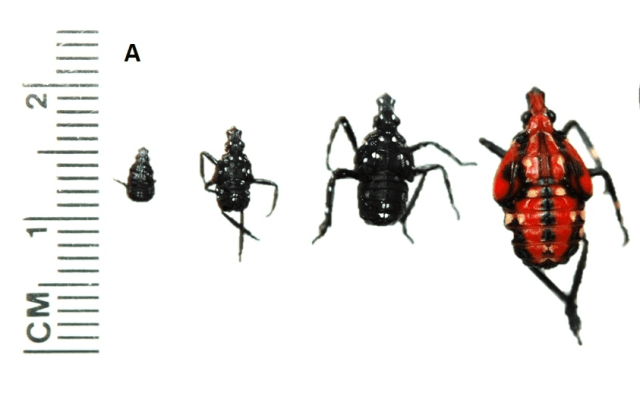by Bronwynne Bailey
Keep your eyes open for the spotted lanternfly! This very invasive species is spreading in the United States and has made its way as far south as Tennessee. It is likely to find its way into Mississippi at some point, and any observations should be reported immediately. Contact your county’s MSU Extension office or the Mississippi Department of Agriculture.
Take a picture or catch the insect if you can. It is important that reports be supported by samples or photos so identification can be confirmed!
Learn more about the spotted lanternfly here: https://www.aphis.usda.gov/plant-pests-diseases/slf
Spotted lanternfly (Lycorma delicatula) is drawn to Tree of Heaven (Ailanthus altissima) but can lay eggs on any surface. When traveling in contaminated states along the northeast coast as far west as Ohio, inspect your vehicle and other surfaces for eggs and immature nymphs. Check doors, sides, bumpers, wheel wells, grills, and roofs. If found, destroy any eggs or insects you find. The eggs are laid in a group covered with a grey-white putty. This will eventually turn into a dry mud like patch.


 Photo Credit: Heather Leach and Emelie Swackhamer, Penn State.
Photo Credit: Heather Leach and Emelie Swackhamer, Penn State.
Nymphs begin as a black oval with white spots. As they mature, they turn red with black spots.

The adult lantern fly is one inch long and a half inch wide, tan colored with black spots. When the wings are spread, the forewings are tan with black spots, and the hindwings are scarlet with a black and white band.

The spotted lanternfly is harmful to crops but will not harm people or homes. If you spot eggs, a nymph, or adult lanternfly the goal is to destroy them. If you identify eggs, scrape them with a credit card into a receptacle of alcohol. Nymphs and lanternfly adults can be squashed but be aware they jump quickly in the nymph stage and fly evasively as adults. Attempt to take a picture or retrieve the carcass of the insect and report the finding to your local extension office.
![]()
Post navigation

Comments are closed.